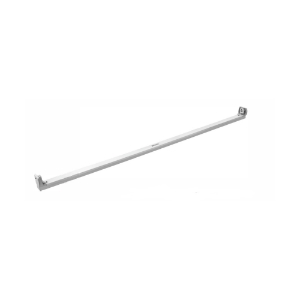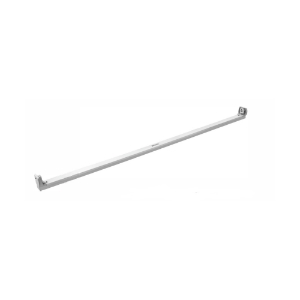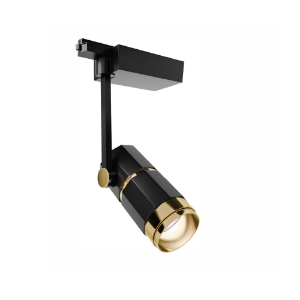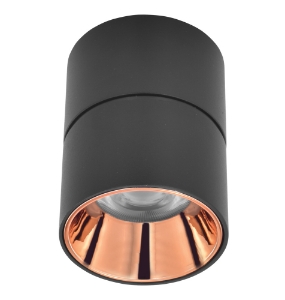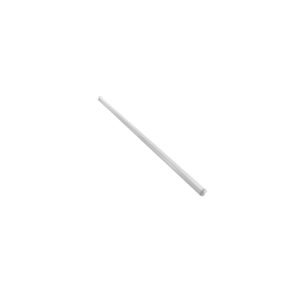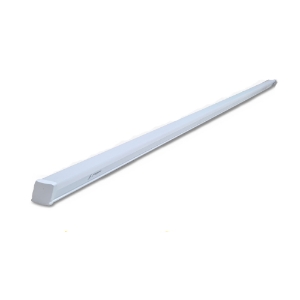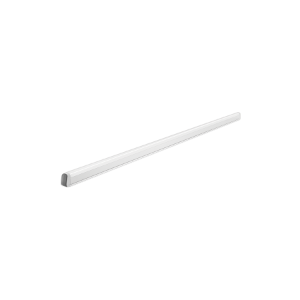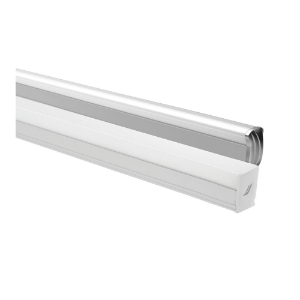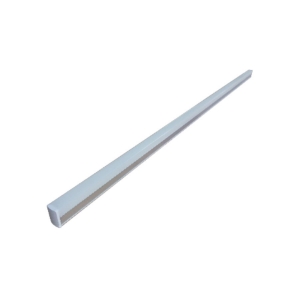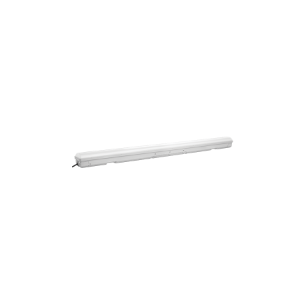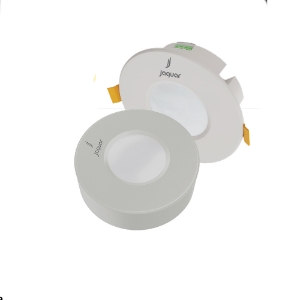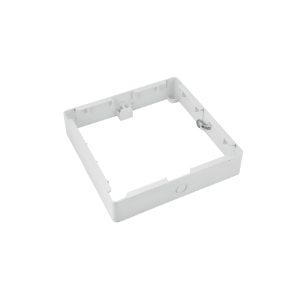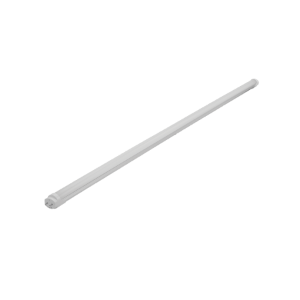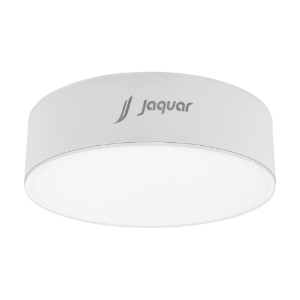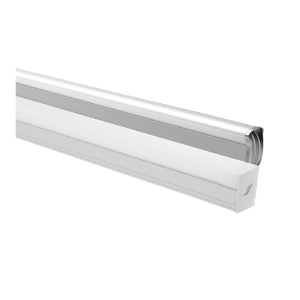-
India
-
ASIA PACIFIC
-
MIDDLE EAST
-
AFRICA
-
EUROPE
-

Surface
- Near-infrared radiation is essential for health, is not produced by LEDs. They create a lot of blue light, which disrupts sleeping habits and can lead to eye illness over time.
- LED lights are cool to the touch, one of its advantages and a contributing factor. LED lights don’t emit Near-infrared radiation. The sun emits this type of radiation, and incandescent and halogen bulbs also release it.
- The benefits of near-infrared heat are numerous. It permeates the skin profoundly and even penetrates garments. The retinal cells are primed to repair and regenerate when this type of light strikes the retina. This is impossible to achieve with LED lights. As a result, they should not be the sole source of light during the day.
- Another issue with LED lights is the significant amount of blue light they emit. In the visible spectrum, blue light has the shortest wavelength. It has been thoroughly investigated and widely acknowledged to be hazardous to the eyes.
- Filament bulbs are point sources, which means that the light comes from a single point and spreads out in all directions. Because light only travels in straight lines, it casts a shadow when an object obstructs it. Whether it’s a filament bulb or a fluorescent bulb.
- Because no light ray falls on the darkened area in the case of a filament bulb, the shadow is sharp. In the case of a tube light, the light source is lengthy. Therefore there is no potential for it to diffuse into the darkened zone (and even if it does, it is extremely modest).
- Even if light from one end of the bulb casts a shadow, the darkened area may be illuminated by light rays from the other end or section of the bulb. As a result, the shadow is hazy.
- A maximum wattage rating on many fittings. If any of yours do, it’s the highest wattage you can safely use in that fixture. Any bulb that draws even a little more current than the fixture’s maximum rating—for example, a 75W bulb in a fixture with a 60W maximum rating—risks causing a fire.
- A label showing the maximum wattage rating is necessary on any modern fixture. If the light bulb is removed, it will be visible inside the fixture. Of course, unless you know differently, it’s safer to presume it contains less heat-resistant wiring. However, the issue of the maximum safe power remains unanswered.
- Three factors influence the maximum safe wattage of a fixture. The first is the amount of heat produced by a specific light bulb. Another factor to consider is the fixture’s maximum heat tolerance. Whether the fixture is enclosed or open. If it is open, especially if it’s open on top, the maximum safe wattage will be higher. The larger the bulb may be, the easier it is for heat to escape from it.
- When inexpensive LED lamps are connected to old-style dimmer switches, they flicker repeatedly or when the dimmer is adjusted very low, there is always a controversy about poor quality LED lamps and luminaires that create flicker. This is due to the insufficient load being provided to the light caused by inconsistent voltage once again.
- The dimmer switch was also built for traditional lighting, which has far higher loads than LED. With reputable LED items, switching to an LED-specific dimmer should solve the problem. The fluorescent ballast should be removed before installing LED Tubes; otherwise, incompatibility between the ballast and the LED light may cause a flicker.
- Flickering lights, which are most usually associated with fluorescent lighting, can also be harmful to one’s health as one of the contributing elements to ‘Sick Building Syndrome.’ Migraine-inducing headaches and clogged or runny noses, dry, itchy skin, eyestrain, rashes, fatigue, and difficulty concentrating are all common symptoms.
- Staff sickness-related absences or, in the worst-case scenario, long-term work absences result from these symptoms. Individuals with light sensitivity, such as those with autism, lupus, chronic fatigue, Lyme disease, and vertigo, may have a hard time with such flicker-inducing illumination. Epileptic seizures have been linked to short-term exposure to frequencies ranging from 3Hz to 70Hz.
- All Jaquar LED products are dimmable, with commercial and industrial solutions boasting precision-focused DALI drivers and 0-10V dimming for smooth and gentle dimming. These are premium drivers that ensure that the LEDs receive a constant current and allow our luminaires to interact with lighting control systems to improve energy efficiency and eliminate light waste.
- LEDs utilize half as much energy as typical incandescent, fluorescent, and halogen bulbs, resulting in significant energy savings, particularly in areas where lights are left on for long periods, in contrast to traditional bulbs, which release light and heat in all directions, LEDs direct light in a specific direction. The ability to produce light saves both light and energy.
- LEDs, unlike incandescent lighting, do not “burn out” or “fail”; instead, they dim over time. Depending on the quality of the bulb or fixture, LEDs have a lifespan of 30,000–50,000 hours or even more. An incandescent bulb lasts roughly 1,000 hours, while a compact fluorescent bulb lasts 8,000 to 10,000 hours. LEDs can reduce labor expenses associated with bulb replacement in commercial settings, resulting in a lower-maintenance lighting system.
- Unlike fluorescent lights, LEDs enjoy the cold. Fluorescent lamps require more voltage to start at low temperatures, and their luminous flux (the apparent power or intensity of light) is reduced. In contrast, as working temperatures drop, LED performance improves. LEDs are therefore ideal for refrigerated showcases, freezers, and cold storage areas, as well as exterior applications such as parking lots, building perimeters, and signage.
- Most fluorescent and HID bulbs don’t turn on to full brightness immediately, and many take three or longer to attain full brightness. On the other hand, LEDs turn on at full brightness practically quickly and do not require re-striking. This is useful during a power loss or if personnel enter a business early in the morning while it is still dark outside.
- A maximum wattage rating is seen on many fittings. If any of yours do, it’s the highest wattage you can safely use in that fixture. Any bulb that draws even a little more current than the fixture’s maximum rating—for example, a 75W bulb in a fixture with a 60W maximum rating—risks causing a fire.
- A label showing the maximum wattage rating is necessary on any modern fixture. If the light bulb is removed, it will be visible inside the fixture. Of course, unless you know differently, it’s safer to presume it contains less heat-resistant wiring. However, the issue of the maximum safe power remains unanswered.
- Three factors influence the maximum safe wattage of a fixture. The first is the amount of heat produced by a specific light bulb. Another factor to consider is the fixture’s maximum heat tolerance. Whether the fixture is enclosed or open. If the fixture is open, especially if it’s open on top, the maximum safe wattage will be higher. The larger the bulb may be, the easier it is for heat to escape from it.
- It’s critical that LED lighting saves energy while emitting a pleasant, warm glow. This will not only save you money on power, but it will also help you save money on replacements because they will last longer. Always keep an eye out for LED companies that offer energy-saving lights for a variety of applications.
- LED firms should always offer new and innovative fixtures to increase the aesthetic appeal of that place, whether for home or commercial uses. With Jaquar lighting, you can count on some of the most famous designs to capture your attention.
- Discover a new era of color lighting with LED solutions that may be used in a variety of industries. Keep a lookout for companies that provide a diverse choice of color LEDs that are both energy efficient and inexpensive. Colour LEDs are also available in a variety of forms, allowing them to be used for a variety of purposes.
- An LED company must comprehend the needs of its customers, and site assessments are necessary for this. This allows the business to anticipate the scenario and enables them to provide immediate assistance with appropriate solutions. Jaquar lighting ensures that professional electricians from the area come out to evaluate the location and provide free help.
- Check to see if the LED company you choose offers an LED fixture warranty and maintenance. Highlights Energy is proud of its services, which include a 5-year guarantee and free client maintenance. The recent emergence of LED firms may make it tough to find the correct one for you, but you can cross off your list efficiently with these considerations.
- LED bulbs are small and light. The size of a tube light or a fluorescent bulb is relatively large. The average LED bulb lasts 60000 hours. The life expectancy of a tube light is ten thousand hours. Compared to LED bulbs, this is six times less.
- Compared to tube lights, LED Bulbs use five times less energy to provide the same level of illumination. The tube light consumes energy five times compared to LED bulbs.
- LED bulbs are ideal for directional lighting applications such as flashlights and desk lamps. LEDs are also used in vehicle headlights and status lights in electrical equipment. Full-size tubes are appropriate for vast places like warehouses where focused light isn’t required.
- The efficiency of LED lights is very high. In comparison to ordinary incandescent bulbs, tube lighting has high efficiency. However, compared to LED bulbs, it is less efficient and makes it clear that LED bulbs are more efficient than tube light, and you can get yourself some of the best-LED bulbs from Jaquar.
- Cleat Wiring: Ordinary VIR or PVC insulated wires (sometimes encased and weatherproof cable) braided and compounded are secured on walls or ceilings by porcelain cleats, plastic, or wood. Because cleat wire is a temporary wiring system, it is not ideal for home use. The cleat wiring method is no longer in use.
- Casing and Capping Wiring: Casing and capping wiring systems were popular in the past, but Conduit and encased wiring systems have rendered them obsolete. VIR or PVC cables and any other permitted insulated cable were utilized in this type of wiring.
- Batten Wiring: This type of wiring uses TRS cables that are single-core, double core, or three core with a circular, oval shape. Single-core cables are the most common choice. TRS cables are chemical, water, and steam resistant; however lubricating oil has a minor impact on their performance. TRS wires run on a 10mm thick, well-seasoned and straight teak wood batten.
- Lead Sheathed Wiring: Conductors are insulated with VIR and covered with an outer sheath of a lead aluminum alloy containing roughly 95% lead in this form of wire. Cables were protected from mechanical damage, moisture, and air corrosion by the metal wrapping.
- Conduit Wiring: Surface conduit wiring occurs when conduits are put on the roof or wall. In this wiring approach, holes are drilled through the wall at equal intervals, and the tube is fitted using rawl plugs. Concealed conduit wiring is when the conduits are hidden inside the wall slots with the help of plastering.
- Fluorescent lighting’s energy efficiency is one of its most attractive features. When compared to a traditional light bulb, a fluorescent tube typically saves 25-35 percent of the energy it consumes. Fluorescent lights also generate less heat than other types of lighting.
- In comparison to incandescent bulbs, compact fluorescent lights are around four times as efficient. A 13-watt compact fluorescent light produces the same amount of light as a 60-watt incandescent bulb. For the amount of light they produce, they are pretty small. The majority of CFLs are 4-5 inches tall, with the most prominent, ultra-high-output CFLs being around 12 inches tall.
- They have robust lumen maintenance, which implies that their light output does not degrade significantly over time. A CFL will still be nearly as bright after a couple of years of use. On the other hand, HID metal halide and high-pressure sodium bulbs can degrade by up to 50%. They have a 10,000-hour lifespan on average.
- Turning off lights and appliances when they are not in use is a simple way to save energy. You can also save energy by doing household duties by hand, such as hanging your clothes to dry instead of putting them in the dryer or hand-washing your dishes.
- Traditional lighting such as fluorescent and incandescent lights are up to 80% less efficient than LED lights. Only 5% of the energy in LEDs is squandered as heat, whereas 95% is transformed into light. Compared to fluorescent lights, which convert 95% of their power to heat and only 5% to light, this is a huge difference, from replacing traditional incandescent lights with LED lights.
- Appliances account for around 13% of total household energy use on average. When buying a device, keep two numbers in mind: the initial purchase price and the annual operating cost. Although energy-efficient appliances may cost more upfront, their operational costs are typically 9 to 25% cheaper than conventional versions.
- While looking for an energy-efficient light, search for a Jaquar label, which is a federal assurance that the light will use less energy while in use and when not in use than regular models. The amount of energy saved varies depending on the light.
- The ground connection is strictly for safety. There should be no current flowing in the ground connection, regardless of the load. Its goal is to keep voltage away from the external components. A small amount of water in the incorrect area might cause a lethal voltage to appear on parts that you can touch.
- If they’re grounded and keeping the external components at zero voltages then the voltage is safely bypassed to the ground. A circuit breaker will trip, or a fuse will blow if enough current flows. However, unless the fixture comes with a metal casing, there is no need or requirement for safe ground. To avoid electrical shock, metal housing will need to be “Safety” grounded.
- When only one LED is used, the voltage is DC, usually extremely low, under 5 volts, and a resistor controls the voltage if the voltage source is more than that required. Multiple LEDs demand more energy controlled by resistors, as in a screw-in replacement for a 60-watt incandescent bulb.
- Now, any fixture that uses LEDs, or a bulb that uses LEDs to replace an incandescent bulb, must be grounded, similarly to the incandescent-bulb-using fixture. If not grounded, these fixtures use 110/120 volts AC power and might cause injury.
- The CFL is a light bulb that produces light through fluorescence, whereas the LED has visible light using a semiconductor diode. The CFL operates on the ionization concept. LEDs, on the other hand, work on the principle of electroluminescence. The diode emits light when the current passes across it in this phenomenon.
- When compared to LEDs, CFLs consume more energy. Because CFLs employ mercury, ionization demands more electricity. The CFL includes mercury vapor inside the glass tube, which is harmful to living creatures’ health, but the LED does not.
- Because CFL lights contain dangerous mercury vapor, they are difficult to destroy. The mercury vapor harms human and environmental health, but LEDs are easy to destroy because they are free of poisons and metals.
- When compared to LEDs, CFLs are more efficient. The luminous flux emitted by the bulbs determines the bulb’s efficiency. The visible light rays, which are measured in Lumens, make up the luminous flux. As a result, a bulb with a high Lumens per watt is regarded to be more efficient.
- CFLs have a lower turn-on intensity than LEDs because they contain mercury vapor, which takes time to ionize. The cost of a CFL is higher than that of an LED. CFLs require additional components, such as gas-filled tubes and an electrical component, which raises the price.
- The overall light output is measured in lumens. The higher the lumens, the more light is produced. An LED panel’s efficiency is calculated by dividing its lumens by its power (watts). An LED panel’s efficiency increases as the lumens per watt increase. In terms of fuel efficiency, this is similar to liters-per-100 km. Ensure that the lumens-per-watt rating is accurate.
- The color of the light is a personal choice based on usage and preference. The color temperature of an LED panel is expressed in Kelvins and describes how the light from that panel will appear (K). 4000 to 5000K for a fresh, modern aesthetic perfect for offices, schools, retail, and commercial spaces. For LED panels, this is the most common option. The color temperature ranges from 3000 to 4000 k, commonly used in basements and garages to simulate natural light.
- Emergency lighting for multiple panels required in most systems. In a power outage, the emergency LED panel will give light for at least three hours in specific areas such as escape routes. LED panels are best used as emergency panels because they consume less electricity. There are even emergency-ready variants of integrated LED panels.
- Leaks can waste a lot of energy, and fixing them can save you a lot of money right away. According to reports, a compressor’s output might be reduced by 20 to 30% due to leakage. They may also reduce your equipment’s effectiveness. Missing seals or welds, loose tubes and hoses, and old materials are all familiar sources of leaks.
- Because manufacturing buildings must be well-lit, energy-efficient lighting and fitted effectively. Businesses can save energy using industrial compact fluorescent light bulbs (CFLs) or light-emitting diodes (LEDs). Lights in non-essential locations should also be turned off or removed, which you can get from the varied range of Jaquar lights.
- Electricity runs almost all of the electronics at your facility. Shutting down equipment at the end of the day might seem obvious, but it’s easy to neglect. Remind your staff to turn off their laptops and other devices or put them into sleep mode when they are not in the office, whether for a few hours or a lengthy vacation.
- LEDs are the only light sources that can be customised to give the proper spectrum and do fantastic things for plant growth because they are monochromatic sources and come in a wide variety of pure hues. Plants grow faster and healthier under LEDs than under other, more traditional lighting techniques like HPS, and even better than under natural sunshine if the LEDs are suitable.
- Not A whole spectrum of colours is present in all light sources; however, specific light sources only comprise a portion of the range. On the other hand, Sunlight encompasses all of the spectrum colours and provides energy to plants, triggering metabolic responses or influencing behaviour. Plants respond differently to different shades of LED chips that are installed inside the light.
- Red and blue are the two most critical light colours to use in an LED bulb. The colour red is essential for photosynthesis and stems elongation inhibition. Furthermore, it informs the plants that there are no other plants above them, allowing them to develop freely. Stomatal opening, stem elongation inhibition, leaf expansion, and curving toward light are all stimulated by blue.
- Plants can be grown in the house with regular LED bulbs, but only to a limited extent. Because blue plays such a significant role, a 6000K CC cool-white LED with a higher concentration of blues is chosen over a warm-white LED with a lower concentration of blue and a more significant red concentration. In either case, the green section of the spectrum wastes energy. The total cost of fuel used will determine the viability of bio-products. Thus go for a blue and red light.
- There are a lot of low-cost brands that produce third-grade items. LED lamps are made up of individual light-emitting diodes that might cause eye damage if viewed directly. That’s why these come with a diffuser for indoor use and a lens for outdoor lighting such as street lights and floodlights.
- You will be able to see the individual diodes if the diffuser is also of poor quality, which can hurt and harm your eyes. Jaguar, for example, is a high-quality brand. The majority of modern street lighting does not have lenses on the diodes. This is done to save money because, under government procurement, the lowest bidder gets the order, even if he compromises on quality.
- When it comes to choosing LED light that is good for your eyes, color is also crucial. It is beneficial for your eyes to select lights that are 5700K; the best technique is to look for a bluish hue. If the LED has a bluish tint, it does not have a diffuser. When purchasing LEDs, look for reputable brands or those that do not have a bluish hue.
- Fluorescent lights contain mercury, a toxic substance that poses a waste disposal problem when the light is turned off. A limited quantity of hazardous mercury is released as a gas by broken bulbs, while the remainder is trapped in the glass itself.
- Fluorescent lights are omnidirectional, which means Light is emitted at a 360-degree angle. Because at least half of the light must be reflected and redirected to the desired location, this is a significant system inefficiency. It also means that more light fixture accessories are needed to reflect or focus the bulb’s luminous output (thus increasing unit costs).
- In comparison to other lighting technologies, LEDs have an extraordinarily long lifespan (including fluorescent lights). New LEDs have a life expectancy of 50,000 to 100,000 hours or more. In comparison, the average lifespan of a fluorescent bulb is only 10-25 percent of that of an incandescent light.
- In comparison to other commercially available lighting technologies, LEDs are particularly energy-efficient. There are various reasons for this, including the fact that they lose relatively little energy in the form of infrared radiation (far less than most conventional lights, including fluorescent lights), and they emit light in a specific direction.
- Turning off lights and appliances when they are not in use is a simple way to save energy. You can also save energy by doing household duties by hand, such as hanging your clothes to dry instead of putting them in the dryer or hand-washing your dishes.
- Traditional lighting such as fluorescent and incandescent lights are up to 80% less efficient than LED lights. Only 5% of the energy in LEDs is squandered as heat, whereas 95% is transformed into light. When compared to fluorescent lights, which convert 95% of their power to heat and only 5% to light, this is a huge difference, hence replacing traditional incandescent lights with LED lights.
- Appliances account for around 13% of total household energy use on average. When buying a device, keep two numbers in mind: the initial purchase price and the annual operating cost. Although energy-efficient appliances may cost more upfront, their operational costs are typically 9 to 25% cheaper than conventional versions.
- While looking for an energy-efficient light, search for one with a Jaguar label, which is a federal assurance that the light will use less energy while in use and when not in use than regular models. The amount of energy saved varies depending on the light.
- Traditional fluorescent tubes may only last 34,000 hours, whereas Energy Focus LED lights have been tested for over 70,000 hours. We even back up our statements with a 10-year end-to-end warranty for most of our LED tubes and luminaires. Imagine going ten years without changing a single lightbulb!
- Focused Energy LEDs are self-contained, which means they function without use of a ballast. A ballast powers fluorescent lighting. Just like tubes, ballasts wear out and need to be replaced. The LED drivers and LED chips are integrated inside the tube itself in LED lights. So the only item you have to replace when the light goes out is the lamp itself.
- Traditional lighting such as fluorescent and incandescent lights are up to 80% less efficient than LED lights. Only 5% of the energy in LEDs is squandered as heat, whereas 95% is transformed into light. Compared to fluorescent lights, which convert 95% of their power to heat and only 5% to light, this is a huge difference.
- There are no harmful ingredients in LED lights. Fluorescent strip lights, which contain hazardous compounds such as mercury, are currently used in most offices. When disposed of in landfill waste, this will pollute the environment. Switching to LED reduces the cost and time constraints of compliant disposal while also helping to conserve the environment. Disposal must be arranged through a licensed trash carrier.
*Caution: Beware of Fake Promotions or Offers
Please exercise caution and do not trust or engage with any fake promotional messages claiming to offer Jaquar Franchise opportunities. These may include phone calls, SMS, WhatsApp messages, emails, or web links asking you to click on a link and share personal details.
Such websites, links, and offers are fraudulent, misleading, and unauthorized. Interacting with these communications may result in financial loss, identity theft, or misuse of your personal information.
Jaquar & Company Private Limited does not endorse, authorize, or accept any responsibility or liability for these deceptive activities. If you receive any such message, please report it immediately through our official website or customer care channels and thoroughly cross-verify for authenticity of any such communication.


